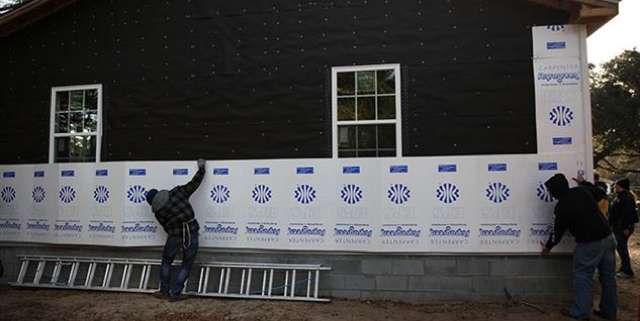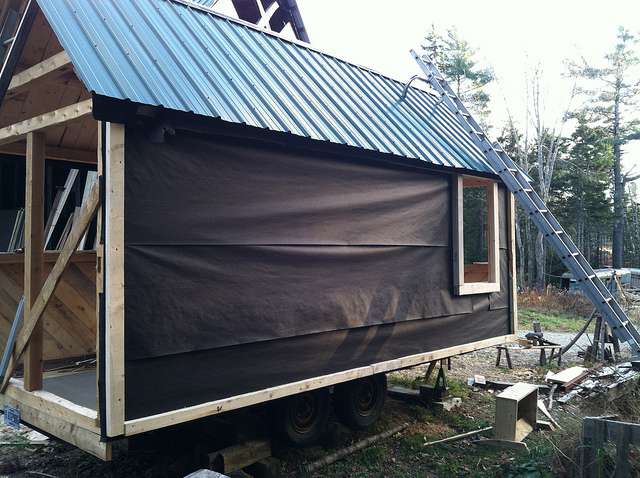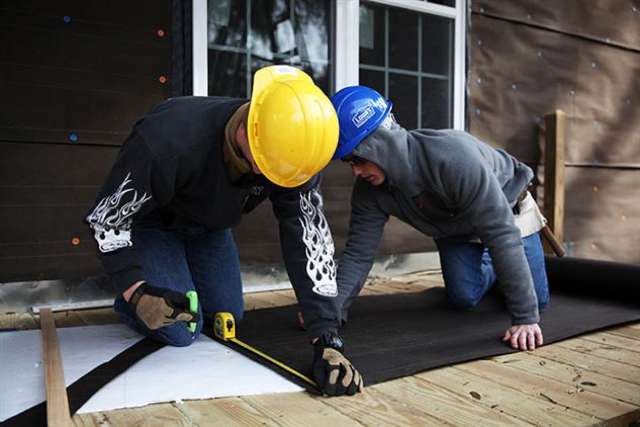
Tar paper and roofing felt help protect a building’s wooden frame from water damage. Image Source: Creative Commons user U.S. Marine Corps
When a contractor is building a structure from scratch, they have to ensure that the wooden frame is well-protected at all times. Just one afternoon of heavy rainfall could cause significant water damage and may even make the building more prone to rot, leaks, and mold in the future. This is why many contractors use tar paper or roofing felt to add an extra layer of protection to a structure. In fact, this construction material is a requirement under many building codes around the country.1 High-quality tar paper and felt is waterproof, which protects the building from environmental damage over time. And, in some cases, the paper may also improve the appearance of a building’s roof. The product provides a smooth, even base for the shingles to adhere to, allowing them to lay perfectly flush against the surface.
Because tar paper and felt are the base on which shingles and siding materials are later applied, product consistency is absolutely essential. Not only does the texture and thickness of the product have to be exact from roll-to-roll in order to provide an even base layer, color quality control is also important to facilitate correct markings and measurements. When you use a spectrophotometer to test your tar paper or roofing felt during the manufacturing process, you ensure color consistency in every roll.

If tar paper isn’t consistent in color, it can be difficult for contractors to make accurate measurements. Image Source: Flickr user Stone Soup Institute



